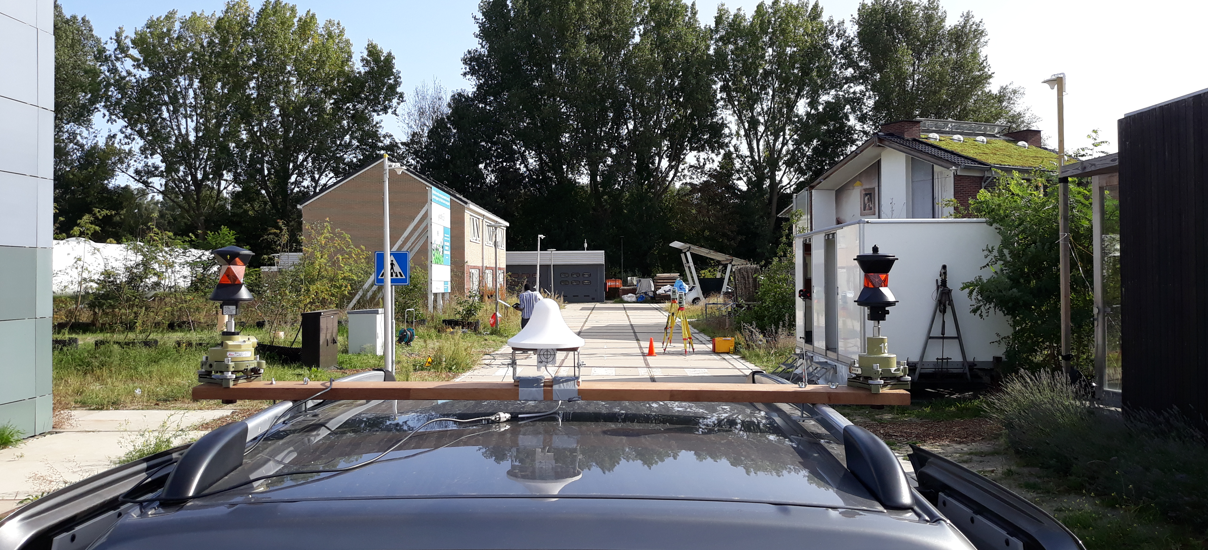Accurate timing and positioning through an optical-wireless distributed time and frequency reference
Introduction
Today our society heavily relies on Global Navigation Satellite Systems (GNSS), such as GPS, for positioning and navigation, as well as the distribution of time and frequency reference signals. GPS has an excellent proven track record, and a very high economic value, but at the same time GPS has, as well as other GNSSs, a number of limitations.

The SuperGPS project
In this project we aim to develop a hybrid optical-wireless system for accurate positioning, navigation, and network synchronization for many applications, as shown in the figure above. Here, blue lines represent fiber-optic connections in the telecom network, synchronized to an accurate optical Master clock (in the red square). The synchronized optical network serves as a backbone for a wireless enhanced terrestrial positioning system (in green squares). The wireless link will use wideband radio signals, rather than today’s relatively narrowband GNSS-signals. One of the applications lies in smart highways and automated driving, and a pilot demonstration of SuperGPS technology on the road is the final aim of this project.
Targets
SuperGPS should allow for simultaneous data, time and frequency transfer (with 10 picosecond accuracy and 10-18 relative stability, respectively) through fiber-optic networks, and positioning (with 1 decimeter accuracy, or better), in particular under those circumstances in which satellite navigation is not available, or only with strongly reduced performance.
Organisation
The project - for four years - started in 2016 and is carried out by Delft University of Technology, specifically the Faculty of Electrical Engineering, Mathematics, and Computer Science, and the Faculty of Civil Engineering and Geosciences, together with the Department of Physics at VU University in Amsterdam (LaserLab institute).
This research project is funded by the Netherlands Organisation for Scientific Research (NWO)



